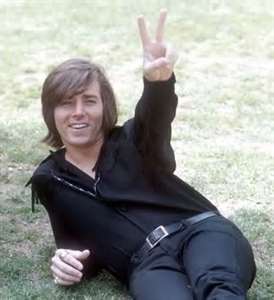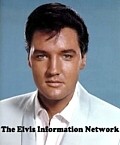Interview:
DR. GARY VIKAN
author of: From the Holy Land to Graceland
|
Interview conducted by telephone on 27 January 2013
|
Read EIN's review of Dr. Vikan's book:
From the Holy Land to Graceland Sacred People, Places and Things in Our Lives, Gary Vikan, The AAM Press, USA, 2012, Flexicover, 202 pages, Index, Bibliography, List of illustrations, ISBN: 9781933253725
Reviewed by Nigel Patterson, January 2013
|
|
..............The Interview.............
EIN: Gary, thank you very much for taking time to talk to us today. It is appreciated!
Gary Vikan: My pleasure.
EIN: Please tell us a little about yourself. Who is Gary Vikan?
Gary Vikan: I'm from the midwest. I went to public school as a child and I got into academics and eventually became a Byzantinist. Which is to say I have a Ph.D in the study of the Christian world of the East of the middle ages. And that led me indirectly to Elvis who as you know in my book I see as a modern counterpart to the medieval saints.
EIN: Gary, when did you become an Elvis fan and when how did your interest in Elvis as saint/secular charismatic martyr arise?
Gary Vikan: Well, I'm 66 years old which means to say that i was 9 or 10 when Elvis lurched on the scene in the United States and about that time or slightly afterwards I began to collect a few records including several Elvis records. And all of us at that stage, even 10 to 12 year olds, combed our hair in a way to imitate Elvis. And I did that. Then there was a lapse of probably 20 years or so between that early childhood acquaintence with Elvis and my revisiting him through the eyes of the academic I became.
EIN: Your book From the Holy Land to Graceland dealing with Elvis as Saint was released late last year. How has it been received?
Gary Vikan: As far as I can tell people like it. I wrote the book in a tone that I use when lecturing on Elvis that I'd like to think bridges two very different things in a way; one is the fascination and ultimately enormous respect and affection for Elvis and Elvis fans who I am very fond of. I enjoy Graceland immensely. On the other hand, at this stage in my life, I have not lost the sense of absolute fascination with what goes on there. I find it just amazing and so I'd like to think that the book has a little bit of humor, a little bit of wide eyed amazement at what I see whether it's at Graceland or Pere-Lachaise Cemetery where Jim Morrison's grave is or even at Lourdes in France where I was a few years ago and where the holy waters are, I'm just amazed about what people do and how strongly they believe in things.
EIN: Gary, to give our readers greater perspective to the interview could you how the concept of sainthood differs between the religious and the secular?
Gary Vikan: Yes, I spend quite a bit of time about that in the book because I think most people....I was brought up a Lutheran and for us saints were kind of strange and almost seemingly inappropriate, but for most people as they grow older and are generally aware if they're not Catholic they're aware that Catholics have a lot of saints. And they are probably also aware that in catholicism it is not easy at all to become a saint anymore. The process is very convoluted and calls for an exemplary spiritual life, miracles and often an incorruptable body, a body that doesn't decay after death. And so it can take decades for somebody to be canonised. And even after decades it may never happen. It is completely different to the world of Christian Orthodox even now and totally different to what the early churches where saints were made by popular acclamation. The closest thing we see to that in Catholicism is Pope John Paul where there is such profound affection for him following his death.
The whole thing in the first part of the book is to draw a distinction between within Christianity what is now a very slow process incatholicism and what was formerly a very quick process; and then to turn attention to the secular world and sociologist Max Weber's notion of the charismatic. The charismatic is somebody who is special and is recognised as very special, as saints are. And that quality of specialness puts them on a pedestal between ordinary people like us and God and these charismatics are quite amazing.
You know Jack Kennedy was charismatic, Bill Clinton is charismatic. And Elvis certainly is and Michael Jackson. So these charismatics are very powerful secular people, especially if they die young and are victims of something. When these things are present they are raised up to this lofty sphere of secular sainthood. While some people find it hard to see this the concept certainly is there and the behaviour that follows is very similar in many ways to to the behaviour that's associated with Christian canonising.
EIN: The term used to describe Elvis as Saint is Secular Charismatic Martyr. Many of our readers will be interested in knowing more about the "martyr" aspect.
Gary Vikan: This term is based on Weber's non-religious, value-neutral terminology. Elvis as martyr has to do with him dieing young and not because of the usual suspect, Dr. Nick, but because of his fans, whose demands for him to perform ultimately killed him.
That Elvis endured years of physical and emotional pain and that eventually "Elvis died for our sins" is common on the inconography at Graceland and around Elvis more generally. |
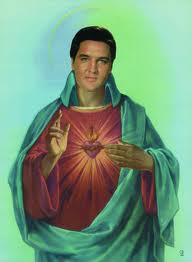 |
EIN: Gary, you discuss a number of basic elements which underpin both religious and secular sainthood. One of these is loca sancta. You state that Graceland is Elvis’ locus sanctus or holy place. Could you explain this for our readers.
Gary Vikan: I talk at length about locus sanctus (singular)/loca sancta (plural) in my book with many examples. At its simplest Locus sanctus means holy place. It contains the residue of the charismatic and is the destination of pilgrimage. The idea is there are places of intense spiritual radiation where a holy event took place, the person lived, where their holy body remains, where you find them.
I find it interesting that Graceland is unique among both religious and secular loca sancta, in that all of the defining characteristics of a holy place are concentrated there. Elvis lived there, he died there, his body is there, his relics - clothes, other possessions are all at Graceland. There are hundreds......thousands of them, although admittedly not to many of them in Maryland where I live but they are all over the world and in the religious sense especially throughout the Middle East.
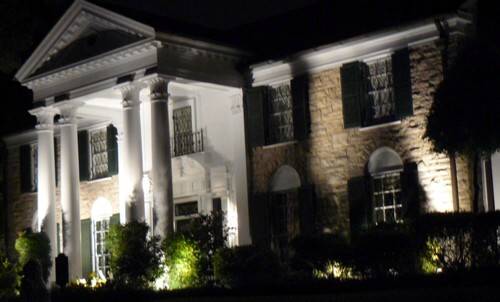
EIN: Another concept you discuss is that of communitas (sense of community). Please tell us about it.
Gary Vikan: Communitas is not a familiar word to many people but it is a common word for sociologists. Essentially those who are part of a particular community see it as there's us and there's the rest of the world. In the case of Elvis, because he was a southerner, at a time when southerners in the United States were disdained, was all the more reason for people to feel 'that somehow the world really doesn't understand us. We understand Elvis, we understand each other and the fact that people in New York, that people are out to make fun of us'. You know, it's not hard to find people who think the ongoing interest in Elvis is ridiculous and that Graceland is ridiculous, so there's nothing that's stronger to cement the conviction of those who find really a kind of spiritual nourishment by visiting Graceland and listening to Elvis music.
EIN: The pilgrimage to Graceland. Like others you mention in your book including the grassy knoll in Dallas and Ground Zero in New York, why is the pilgrimage to these places so important?
Gary Vikan: I think once you understand that you understand a lot more about what makes us human. I express it as the idea that a charismatic figure has a kind of residue and if you were a satellite or were looking down at the earth from the space shuttle and you could see these spots where charismatics have been like Mecca in Jerusalem or Graceland as glowing spots, as if there's a magnetism, a spiritual magnetism at the place. Getting there, being physically there is not that different to being physically at the gravesite of a loved one on the anniversary of their death.
Pilgrimage is something so primordial and basic to the human spirit, something that I'd guess has been part of us since prehistoric times. But being there at the time, at Jerusalem at Easter and Bethlehem at Christmas and Graceland in August, it's not just to be proximate to the memory and materials of the charismatic but it's almost like reliving part of your life.
| You know, there's one thing about being at Graceland in August and that is the heat, it is very powerful, the humidity. And all these people who are there look like Elvis and behave like Elvis. Everytime you turn around you see another Elvis. And that's quite startling. A
nd fans see the interview Vernon Presley recorded on the afternoon of August 16, 1977. A similar thing happens at the small museum in Dallas where they play the TV news reports from the day Kennedy was assassinated. These serve as a trigger for all memories to flood back. More recently, the tragedy of 9/11. |
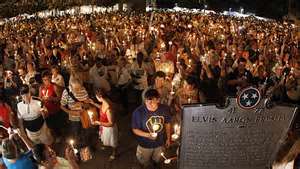 |
Being at Ground Zero on the anniversary of 9/11, with all the ingredients there, allows you to re-experience that moment......a re-experience of the sacred....and that's really quite amazing. And I would bet that 98% of human beings have had this experience in one form or other at some time in their life.
EIN: You write that in all religions there is the element of relics. How does this manifest itself when considering Elvis as Saint?
Gary Vikan: Relics are those things left behind either owned by or touched by the Saint or martyr. In the case of Elvis soil from the grounds of Graceland, his clothes, samples of his hair, automobiles, personal books, his signature, are all relics and highly sought after by fans.
EIN: The role of Elvis impersonators or Elvis tribute artists is one which has always fascinated me. In your book you discuss the concept of mimesis in relation to ETAs. Could you explain this concept?
Gary Vikan: Memesis is another sociological concept, it is an idea that was intuitively stumbled on to by people more than a hundred years ago. It is the notion that if you behave like somebody you will acquire the qualities of that person. And that notion of magic is a very old and pervasive one. If you imitate somebody you'll acquire the power of that somebody. Sociologists are beginning top understand what that means on an evolutionary-biology level but it is something that has been part of who we are forever.
For example, in ancient Roman times people had back pain just like people have back pain now. In Roman days you used to carry a small amulet, they were very common, and the amulet shows a guy bending over to cut grain. On the back of the amulet there was one word......sciatica. So the amulet served a symbolic or magic function in that by carrying the amulet this would help make the bearer be able to bend over (be free of pain) like the guy on the amulet. It was so wonderfully simple.
So if you behave like Elvis you acquire the qualities of Elvis and there's nothing more satisfying to be among a group of people who worship Elvis and who may, if you're an ETA, treat you as if you were Elvis.
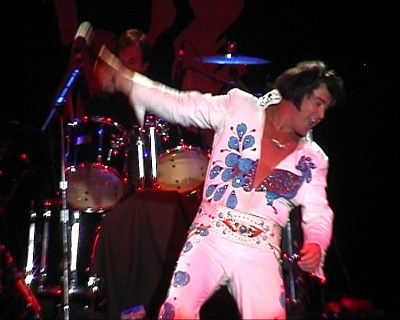
One of Australia's celebrated ETA's (who appeared in the film Honeymoon in Vegas)......David Cazalet
EIN: There are hundreds of other famous entertainers and celebrities yet Elvis stands alone as by far the most imitated. Is there a special reason for that?
Gary Vikan: That's a very good question. I think one reason is that Elvis was just so much bigger in every respect than anyone else. I think another reason has to do with his movements. In his early twenties he was wiggling his hips, in his late 30s he was performing karate kicks and chops on stage. So even a child can approximate these movements pretty quickly. If you're at home it probably doesn't make a whole lot of difference that you move like Elvis, but if you're in a group of people or at a party, everyone recognises it and pretty soon it's fun and they notice you.
Here in Baltimore we have an annual event called The Night of 100 Elvises. Well it now goes for two nights because there are so many of them. Some are very good and some are terrible.
EIN: Gary, in From the Holy Land to Graceland you also discuss the iconography of saints and the advantage Elvis had over earlier religious saints such as Jesus, as Elvis lived in an age where his physical description was captured by modern technology. What is iconography and why is it important?
Gary Vikan: Iconography is the way in which people are able to give visual representation to the qualities of Elvis that are meaningful. Someone might say "Well Elvis has been photographed and filmed so much why would anyone make their own images of him?" An icon itself is a devotional image, which is given special reverance. and respect. In my book I talk about a fan's tattoo where Elvis is shown wearing Christ's Crown of Thorns. It evokes Elvis the martyr and feelings of pain and sorrow.
And I'll never forget when I was at Graceland there was a little shrine that had been put up and it featured a photograph of Elvis which showed him finishing one of his songs in the early 70's, when he would kneel down and bow and he had a capeand he would extend his arms and hold the cape up. It was nothing more than an indication that the song was over, a kind of dramatic exit. Well in this picture they coupled a kind of detail of that photograph just showing his bowed head with the words from "I come to the garden......alone", taken from a Christian hymn.
The photo by itself had no special meaning but once it was coupled with the words from the hymn and placed in the Meditation Garden it went from the realm of being nothing more than a pictorial record of a moment to becoming iconography. There was a deeper story being told, one where Elvis is in the Meditation Garden with Jesus and if you know the hymn you can kind of hear it in your ear, and the Meditation Garden early in the morning is very quiet and the effect of this piece of iconography is powerful.
EIN: The Meditation Garden is a special place and at 6.30 in the morning has a particularly ethereal quality.
Gary Vikan: That is very true. I remember being among 10,000 people at the Candlelight Vigil and then a few hours later visiting the Meditation Garden. There were only a few dozen of us there and it had a very special sort of feeling which we all felt.
EIN: Others have written about Elvis as a secular saint, for example Gregory Reece who wrote Elvis Religion: The Cult of the King , Ted Harrison, Elvis People: The Cult of the King and Professor Erika Doss who included the chapter, Saint Elvis, in her book, Elvis Culture Fans, Faith & Image. Is there much interaction, sharing of ideas, between yourselves?
Gary Vikan: I'm probably closest to Erika Doss. I think what sets me apart is that my work really comes from early Christianity. I work from one thousand years ago forward, rather than from now, 1,000 years backward. also, I think I'm able to bridge the gap between secular saintism and conventional Christian saints through social anthropology. I also don't cast the net too widely, for instance I don't talk about the Buddha. I have deliberately tried to keep my book very focused. |
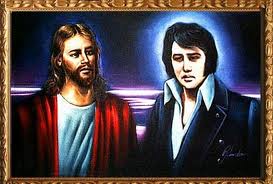 |
EIN: Culture critic, Greil Marcus referred to the social phenomenon of Elvis after his death as Dead Elvis. Mark Gottdiener in his paper Dead Elvis as Other Jesus presented at the First Annual Conference on Elvis Presley took this a step further and said “Dead Elvis is a phenomenon that has no precedent in human history with the possible exception of the social reaction to major religious leaders such as Jesus, Mohammed, or the Buddha”.
Gary Vikan: I basically agree with that and I say that not because Elvis is different in kind, I think he is different in scale. So because Elvis and Graceland are so extreme and powerful in the genre of secular sainthood that they invite comparison across centuries in a way that others, like Michael Jackson, do not.
EIN: In your book you talk about how Elvis has assisted people since his death in August 1977. You mention the wonderful book, Elvis After Life, by Dr Raymond Moody, in which Dr Moody recorded many incidents where Elvis had helped people after his death, including the story of a policeman who found his missing son after Elvis came to him in a dream and revealed the son’s whereabouts in another city. What is happening in these incidents?
Gary Vikan: I have read Dr Moody's book three times. I am very taken with it. You know it came about because he was talking to people about near death experiences and so many of them involved Elvis that he devoted one book to those particular experiences. As to what is happening I think the explanation is very simple in some of the cases. For instance, there was one experience where a psychologist who was troubled experienced Elvis sitting with her and asking her what's wrong. I can imagine that as a kind of daydream like encounter.
Then you have the incident where a person saw Elvis in the wood grains of a door, of a pantry or something like that, the moment Elvis dies. I think that is quite possible. I don't know if you're aware of this but people saw the profile of Satan coming out of the smoke in the Twin Towers. And in fact it looked like that. They took photographs and it kind of looks like that.
There are no miracles recorded by Dr. Moody that I would actually put in the category of really pro-active. You know you grow a new finger or foot; but the story Larry Geller has about Elvis treating the guy* in the motorcycle accident, and the guy gets well in a day or something like that, that's a little harder to explain. Larry Geller records other "miracles" Elvis performed and when looked at alongside Christrian miracles there may not be that much difference between the two.
* EIN Note: The guy was Memphis Mafia member, Jerry Schilling.
EIN: It seems that secular sainthood has a seminal relationship with the celebrity culture of the past century. Is this a valid observation?
|
|
|
Bobby Sherman |
Michael Jackson |
Justin Bieber |
Gary Vikan: You're right and it's something where I've never been able to disentangle the two. You know the Kardashians and this kind of stuff, the craziness people have for seeing things or being close to people who are famous, it does involve the notion of celebrity culture. You know there's one thing about being at Graceland - the number of opportunities for VIP experiences and you don't pay very much for these opportunities. The idea that you can get into the inner circle of the fans, the inner circle of the fan club leadership, the inner circle of the Candlelight Vigil.....this equates as a kind of celebrity proximity that continues after three decades plus....that's amazing to me.
EIN: Taking the last question a step further, why is it that Elvis has been elevated to sainthood status while other major celebrities haven’t?
Gary Vikan: I think Elvis and Graceland in particular is so unusual because postmortem, since 1977, there has been this place to go to where he lived, where he died, where his body is, where much of his famous clothing and other belongings are retained on public display. Graceland is a place that has all the ingredients unlike Neverland, Michael Jackson's ranch. It is devoid of almost all the things Michael Jackson had and in fact you can't even go there. But with Elvis all of these ingredients are present and there is also the fact that Elvis was a Pentecostal meaning his attraction for southern Christians is very powerful.
And there is also that Elvis' music continues to be a point of connection after all these days. I have to talked to people under the age of 25, people who do not have a real life experience of a living Elvis and the combination of the music and going to Graceland and then meeting up with people like themselves at Graceland who are drawn there for similar reasons creates a sense of community.
EIN: Gary, are some celebrities elevated to sainthood status on a temporal basis?
Gary Vikan: Yes that is right. There are many celebrities who never have the residue as Elvis does. The one that struck me as quite interesting is Princess Di. I was at the site in Paris where she and Dodi Fayed died for the first anniversary and went back for the 20th anniversary.
While the first anniversary attracted much interest it was striking at the 20th anniversary that the intensity was gone, it was much tamer. But the intensity is not gone at Graceland!
So what is the difference between Princess Di and Elvis? Well music is one thing. You experience Elvis every time you hear his music. That is an important factor. |
 |
EIN: Can Elvis as Saint endure or is its potency essentially in the baby boomer generation?
Gary Vikan: I think it's going to go on. I say that because when I was at Graceland in 2009, twenty years after being there in 1989. And in 2009 so many people who had been there in 1989 had died, so many visitors in 2009 had no living contact or memory of the 'live' Elvis, never had the opportunity to attend one of his concerts, yet the intensity in 2009 was enormous. And you see the little kids with their parents and the little kids are dressed up as Elvis, have haircuts like Elvis and have the body movements of Elvis and are lip-synching to his music. While only time will tell, I was really surprised by what I saw.
EIN: Gary, you've been to Graceland many a times. A lot of fans are critical of how EPE operates Graceland and how commercial it has become. What is your view on this issue?
Gary Vikan: To me there are two Gracelands. Obviously there is only one mansion and its grounds. But there is a Graceland that is held dear by the fans and that is the Graceland of Elvis. And then there is the Graceland of Elvis Presley Enterprises which is a very financially attuned and thoroughly litigious organisation that for the most part is kind of spiritually at odds with the fans. I know many fans resent Elvis Presley Enterprises for its commercialisation and.......sanitisation isn't really the right word, but it's in the interests of EPE to make Graceland more like a Disneyland, more like something that is just entertaining and worthy of a detour of the family in their recreational vehicle. And the true fans are there in August because they want to make connections with someone who has been deceased for many years now. And those two aims are not the same.
EIN: An interesting anecdotal character in From the Holy Land to Graceland is Dr Jukka Ammondt from Finland, who translated Elvis songs into Latin and released the album, The Legend Lives Forever in Latin. The album is (MO) an acquired taste and certainly something obtuse in the multifarious Elvis world. What was your reaction to the album?
Gary Vikan: (laughs) I think it's amazing. I met him in Oxford, Mississippi in 1996. He got up on stage - there were very few of us there - and he told us a very sad story about his personal life and how he'd gone through this crisis precipitated by divorce and he just was adrift. He started to combine the three things that meant most to him in life, his love of Latin, singing and especially Elvis. Well as you know, he translated Elvis songs into Latin and released an album. Well he's not a very good singer and here we were in Oxford Mississippi in the heat of August 1996 in an auditorium where he had a sound amplification system, the Soundmat, because he was lip-synching. It was kind of funny. He was a sweet guy.
EIN: The album is quite an acquired taste.
Gary Vikan: It is. I show it at my lectures and sometimes play it. When you say some of the titles in Latin (It's Now or Never translates to Nunc Hic Aut Numquam) they sound very funny. For people of my age and older who did Latin in school, when I put it up on the screen, they all think this is just the most wonderful thing. |
|
EIN: One of my particular interests is books released about Elvis. One of the sub-genres is a thriving fiction library of Elvis related titles. Within that sub-genre are a number of books and essays whose theme is Elvis as saint, for instance, Church of E by Scott Linker; Clarke County, Space by Alan Steele which features the Church of Elvis, a 21st religion based on the teachings of Elvis; Death, Resurrection and Transfiguration: The Religious Folklore in Elvis Presley Shrines and Souvenirs by Sue Bridwell Beckham and King Clone by Ted Harrison which features The Latterday Church of Elvis. Were you aware of these writings?
Gary Vikan: I was vaguely aware of it. I'm not sure I understand it in the broader sense of there being a church based on Elvis. When people sometimes ask "Is there a Church of Elvis, is there a theology of Elvis, a ritual or liturgy of Elvis?", well there isn't and I don't expect there ever shall be. As you know in my book while I see a convergence between conventional religion and Elvis, there is no theology of Elvis and his existence should be seen as being at the boundary of structured religion in a similar way as some of the outer religions intersect. The Elvis worship is much more informal and unstructured than that of the world's traditional reilgions.
EIN: Are you aware of the obscure French play by Serge Valletti called Saint Elvis?
Gary Vikan: NO! That's something new to me.
EIN: There have been a large but diminishing number of fans who believe Elvis did not die in 1977. How do these fans fit, if at all, into the paradigm of Elvis as Saint?
Gary Vikan: I think the notion of "letting go" is at the heart of that. And it's so characteristic, if at lesser degrees for Jim Morrison, for Jack Kennedy, but especially Bobby Kennedy. For a long time, in the minds of his supporters he didn't die, it was somebody else and Bobby was on an island somewhere listening to the bulletins he was dead. And I think it is so hard to let go of a charismatic! And that's why there are so many conspiracy theories. Nothing is simple. Princess Di just can't die in a motor accident like normal people - somebody was trying to assassinate Dodi and Princess Di. And the grassy knoll and the second gunman still won't go away. I think the bigger the person is the less comfort there is for a simple answer and the less comfort there is with letting go.
Che Guevara is very interesting to me - what they did with his body - and for that matter, Osama bin Laden - there is now this controversy if the photos of his body are in the public domain. On one hand they wanted to get rid of the body so there's no locus sanctus; on the other hand they needed to verify that it was him.
EIN: Gary, you stepped down from your longtime position as Director of the Walters Art Museum in Baltimore last month. What is next for you?
Gary Vikan: Well I'm working on a book about the Shroud of Turin right now. I'm pretty much done with the first draft and it will probably take me another three or for weeks. I'm partnering with a scientist, a chemist, on the book. He has figured out how the shroud was made. My part is to provide the history of the evolution of the shroud - the relic - and the image on it and he does the part about physically how it was made. We put it in the mid 14th century where all the texts say it first appears. The book is an historical analysis with the technical story. It's not very long but it's another topic I've been working on, on and off for 25 years.
EIN: Gary, is there anything else you would like to say?
Gary Vikan: I just enjoyed this so much. I've never spoken with somebody who knows this stuff so much in depth.
EIN: Gary. Once again thank you very much for talking to us about your fascinating and illuminating book, From the Holy Land to Graceland. We wish you all the best with your next book and for the future.
Comment on this interview
Read about 'Saint Elvis of Munster' (6th century Irish Bishop)
About the author: Until late 2012 Gary Vikan served as director of the Walters Art Museum in Baltimore, Maryland. He was appointed by President Clinton to his Cultural Property Advisory Committee between 1999 and 2003. Trained as a Byzantinist, Dr. Vikan has published and lectured extensively on topics as varied as early Christian pilgrimage, medicine and magic and Elvis Presley. He is adjunct professor at The Johns Hopkins University, Department of Art History, and a faculty member in The Johns Hopkins University School of Continuing Studies. A native of Minnesota, he received a B.A. from Carleton College and a Ph.D. from Princeton University. Dr. Vikan was on the Faculty of Session 482, Libraries and Museums in an Era of Participatory Culture (2011). He is currently working on his next book about the Shroud of Turin.
Dr Vikan asked about his book before it was published: 'What's next? SAINT ELVIS: From the Holy Land to Graceland – a book-length study almost completed. After all, what could be a more logical sequel to Early Byzantine Pilgrimage Art for a populist like me?' |
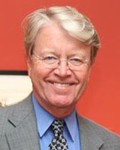 |
EIN Website content © Copyright the Elvis Information Network.
Elvis Presley, Elvis and Graceland are trademarks of Elvis Presley Enterprises.
The Elvis Information Network has been running since 1986 and is an EPE officially recognised Elvis fan club.
|








